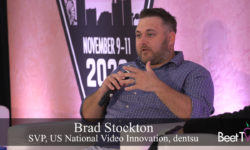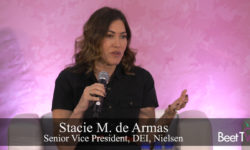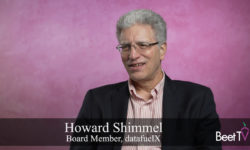SANTA MONICA, Calif. – Consumers for years have divided their time among electronic media, such as watching television while surfing the web or scrolling through a social media feed. The popularity of smartphones magnified this behavior, vexing marketers who seek assurance that potential customers are seeing their advertising.
Brands increasingly want to know whether consumers paid attention to ad campaigns, and how that messaging made them feel or changed their behavior.
“Attention is really at the very beginning of what we’re seeing in terms of using more human-based feedback data to understand levels of engagement around the advertising we deliver,” Chrissie Hanson, chief executive of OMD USA, said in this on-stage discussion with Beet.TV’s Jonathan Watts at the Beet Retreat Santa Monica, “It’s a shift away from device-based metrics.”
While there are ways to detect whether an advertisement was delivered or was viewable, measuring attention is part of seeking a deeper understanding of people’s interactions with media.
Measuring attention “tends to be more of the human feedback piece,” Hanson said, citing examples such as eye-tracking studies that evaluate how people look at ads. There’s also what is known as galvanic response, or measuring heart rate and perspiration to gauge people’s feelings.
“A number of tests should be happening, so you can assess those differences and then say, ‘can I scale this? Can I operationalize this?’” Hanson said. “If I’m going to struggle with that, it’s going to be a little challenging to be able to take one test and move it to the next one and really use it for [media] planning and buying optimization.”
You are watching coverage of Beet Retreat Santa Monica 2022, presented by Ampersand, MiQ, Nielsen, PubMatic, T-Mobile Advertising Solutions and The Trade Desk. For more videos from the Beet Retreat, please visit this page.














































